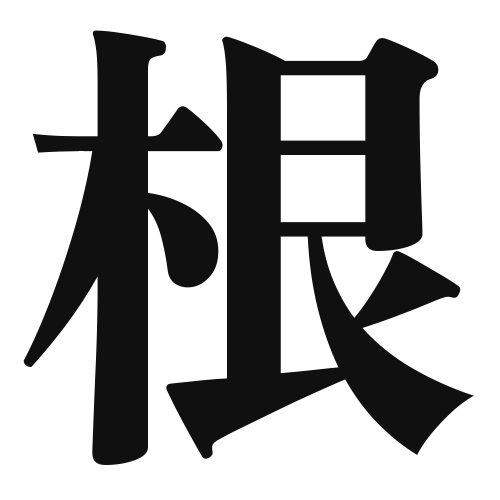1. Overview of Meaning
The kanji “根” (pronounced “ne” in Japanese) means “root.” It refers to the part of a plant that anchors it to the ground and absorbs nutrients and water. Metaphorically, it can also signify the foundation or basis of something.
2. Formation and Radical
The kanji “根” is a compound character (会意文字) that combines two elements: the radical for “tree” (木) on the left, which indicates its relation to plants, and the phonetic component “gen” (言) on the right, which contributes to its pronunciation. The radical 木 signifies that it is related to nature and plants.
3. Examples of Usage
Common words that include “根” are:
- 根本 (konpon) – foundation, root cause
- 根菜 (consai) – root vegetables
Example sentences in daily conversation:
- この問題の根本を考えましょう。 (Let’s think about the root of this problem.)
- 彼は根菜が好きです。 (He likes root vegetables.)
4. Synonyms and Antonyms
Similar kanji with related meanings include:
- 基 (ki) – base, foundation (more abstract than “根”)
- 根源 (kongen) – source, origin (often used in a more philosophical context)
Antonyms include:
- 頂上 (choujou) – summit, peak (the opposite of the base or root)
5. Cultural and Historical Background
The concept of “根” is significant in Japanese culture, symbolizing stability and nourishment. It is often used in proverbs and idioms, such as:
- 根が深い (ne ga fukai) – to have deep roots, meaning to be well-established or to have a strong foundation.
In traditional Japanese gardening, the health of a plant’s roots is crucial for its growth, reflecting the importance of “根” in both nature and life.
